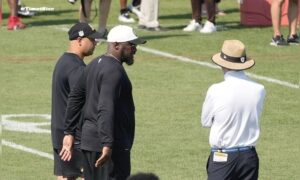Every year leading up to the draft and immediately following the draft, we hear an awful lot about the BPA philosophy, are Best Player Available, which is the draft strategy that the Pittsburgh Steelers and general manager Kevin Colbert proclaim to use as the best means of adding talent to a roster.
While we understand it intuitively, it is self-evident that there are limits to this philosophy. Of course, even Colbert has acknowledged, for example, that the quarterback position has been off the first-round board for the majority of the past decade.
But the limitations to the philosophy certainly go well beyond that. In truth, the only teams that can fully implement such a strategy are those that are either so stacked in their roster that only the top talent can reasonably compete for a spot, or are so deficient in talent that any position on the roster will be immediately upgraded in a meaningful way to the team as a whole.
The Steelers, as with most teams, fall somewhere in the middle of this, but this year, their deficiencies have leaned more greatly to one side than is normal, and as a result of this, we saw a somewhat more forthright Colbert following the draft as he explained how a team in need of defensive supplements came away with six out of eight draft picks on the defensive side of the ball.
We knew we had more holes to fill, defensively, when you just looked at our roster. When you get into the second day, you look at who has the best chance to make your team. We felt it was going to be a 6-to-2 ratio. If it was close, we were always going to favor the defense. When it wasn’t close, we took that offensive player.
Those offensive players, of course, came in the third and fifth rounds. Each day of the draft, the Steelers used their first pick to take not just a defensive player, but a defensive player at one of their two weakest positions, outside linebacker and cornerback.
The public acknowledgement of skewing toward the defensive player when a group of prospects was close, however, does not sound to me to be the standard fare from Colbert and company, which is what makes it interesting.
Not that we didn’t already know it to be true, but the Steelers have had a long tradition, especially so under Mike Tomlin, of providing a stoic public face that uses rote cliché in order to deflect attention and avoid revelation of any type. Colbert went on:
We can’t ignore the players that can make your team. If you’ve got an especially deep position, you’re probably not going to draft that position. If you don’t have an especially deep position, that position will trump the other ones if it’s close. Never if it’s a big difference, and that’s why you see some offensive guys mixed in.
In other words, Colbert acknowledges that the Steelers may not have always taken the best player available—not just more generally, but even on their own draft board. This also fits in with his declaration that they were set on coming out of the second round with a cornerback. Not that there’s anything wrong with operating in this manner. It’s just interesting to hear it acknowledged.








